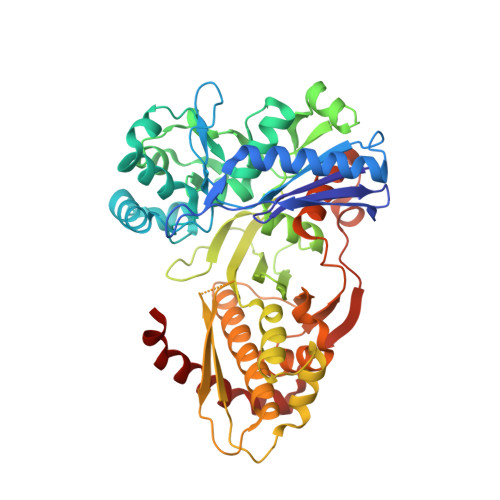Structural and kinetic studies of induced fit in xylulose kinase from Escherichia coli.
Di Luccio, E., Petschacher, B., Voegtli, J., Chou, H.T., Stahlberg, H., Nidetzky, B., Wilson, D.K.(2007) J Mol Biol 365: 783-798
- PubMed: 17123542
- DOI: https://doi.org/10.1016/j.jmb.2006.10.068
- Primary Citation of Related Structures:
2ITM, 2NLX - PubMed Abstract:
The primary metabolic route for D-xylose, the second most abundant sugar in nature, is via the pentose phosphate pathway after a two-step or three-step conversion to xylulose-5-phosphate. Xylulose kinase (XK; EC 2.7.1.17) phosphorylates D-xylulose, the last step in this conversion. The apo and D-xylulose-bound crystal structures of Escherichia coli XK have been determined and show a dimer composed of two domains separated by an open cleft. XK dimerization was observed directly by a cryo-EM reconstruction at 36 A resolution. Kinetic studies reveal that XK has a weak substrate-independent MgATP-hydrolyzing activity, and phosphorylates several sugars and polyols with low catalytic efficiency. Binding of pentulose and MgATP to form the reactive ternary complex is strongly synergistic. Although the steady-state kinetic mechanism of XK is formally random, a path is preferred in which D-xylulose binds before MgATP. Modelling of MgATP binding to XK and the accompanying conformational change suggests that sugar binding is accompanied by a dramatic hinge-bending movement that enhances interactions with MgATP, explaining the observed synergism. A catalytic mechanism is proposed and supported by relevant site-directed mutants.
Organizational Affiliation:
Section of Molecular and Cellular Biology, University of California, Davis, CA 95616, USA.

















